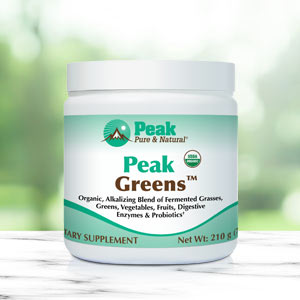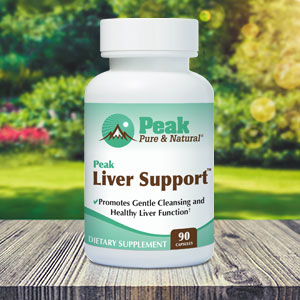Get Easy Health Digest™ in your inbox and don’t miss a thing when you subscribe today. Plus, get the free bonus report, Mother Nature’s Tips, Tricks and Remedies for Cholesterol, Blood Pressure & Blood Sugar as my way of saying welcome to the community!
The dangerous link between herbicide and Parkinson’s

Available research underlines the dangerous link between paraquat herbicide and the development of Parkinson’s disease, yet the use of the herbicide has increased by almost 200 percent in the last decade.
With its approximately 100 million acres of agricultural land, California leads in paraquat use with 10,262,736 kilograms of the chemical being sprayed yearly. The Golden State is closely followed by Texas and Kansas which deploy 8.4 and respectively 3.7 million kgs of paraquat each year. While most European and other countries have banned the use of paraquat for both personal and industrial use, paraquat is still used in more than 120 countries worldwide.
So, the question remains: why is it still used worldwide when its use and physical proximity to people’s homes has been linked to physical ailments and debilitating diseases including Parkinson’s and various forms of cancer Is there a better alternative? And how can we address the big blue elephant in the room?
What makes paraquat dichloride so efficient?
In a nutshell, paraquat is a highly toxic chemical that is commonly used as a weed killer and for general grass control. Paraquat was first introduced to the general population in 1961, and since then, it became a widely used herbicide throughout the United States and the world.
Paraquat is still used because it’s one of the most effective and cheapest herbicides on the market today. Agriculture and farmworkers use it systematically on their land after harvest to destroy any green leftovers. The herbicide kills weeds by stopping photosynthesis. If a plant cannot go through the photosynthesis process then it will not be able to synthesize the nutrients and will wither.
Another reason why paraquat is so extensively used is because it’s quick to apply and it rids farmers of extra tilling work and because weeds have developed resistance to other widely used chemicals such as glyphosate, commonly known as Roundup. While at first paraquat could have been used by anyone, today you need a license from the Environmental Protection Agency to use the chemical, which means it’s only available for industrial use.
What is the causal effect between paraquat herbicide and Parkinson’s?
Paraquat may have been considered the holy grail of herbicides — cheap and potent — in the 60s and even later, but in time, more and more studies have demonstrated the undeniable and tragic link between paraquat and Parkinson’s disease. Unfortunately, unwanted grass and weeds were not the only things that paraquat destroyed. Paraquat has a similar chemical structure with an active metabolite called 1-methyl-4-phenyl-1,2,3,6-tetrahydropyridine (MPTP). This metabolite is shown to cause lesions in the substantia nigra, pars compacta region of the brain in rats, leading to Parkinson’s disease.
According to the Yonsei Medical Journal, it seems that paraquat accounts for 20 deaths per million people. This statistic does not include people who developed Parkinson’s as a result of using paraquat or being indirectly exposed to paraquat by living near farms that use this herbicide on a regular basis.
Parkinson’s disease is a neurological disorder that usually affects a person’s motor skills and movement. In general, symptoms appear gradually, and they include:
- Tremor
- Rigid muscles
- Bradykinesia (slowed movement)
- Changes in speech
- Impaired balance and posture
- Decreased ability of automatic movements (smiling, blinking, moving arms while walking)
- Changes in writing (difficulty writing or writing may appear smaller than usual)
While the cause of Parkinson’s disease has not been established 100 percent, certain factors such as genetics and exposure to certain chemicals including paraquat have been linked to this disease.
In fact, exposure to this herbicide within 1,600 feet of people’s homes has been shown to increase the incidence of Parkinson’s by 75 percent. So, the general population must take extreme caution of their surroundings and make sure they do not live in proximity to farming communities that use paraquat frequently.
Are there better alternatives to paraquat?
The short answer is yes. There are better, greener, alternatives to paraquat and while not all of them might be as effective or as cheap, they are a lot safer for humans and the planet.
For example, in the banana industry companies used to make use of paraquat as their main herbicide, but with developing research linking paraquat to different diseases including Parkinson’s, some banana growers started using non-chemical, greener methods such as mowing, covering the ground with banana leaves, and mulching.
It seems that these methods work for them which makes us wonder why other companies and farming communities can’t invest and look into safer alternatives given that this is such a highly toxic chemical not fit for human use, commercial or otherwise.
Conclusion
Finally, raising awareness on the dangers of paraquat, its link to Parkinson’s disease, and its immediate and prolonged effect on people’s lives is crucial. If Europe and most Asian countries such as Thailand and Vietnam have made the decision to completely ban the use of paraquat, surely the United States could reconsider its stand as far as paraquat use is concerned.
Editor’s note: Have you heard of EDTA chelation therapy? It was developed originally to remove lead and other contaminants, including heavy metals, from the body. Its uses now run the gamut from varicose veins to circulation. Click here to discover Chelation: Natural Miracle for Protecting Your Heart and Enhancing Your Health!
Sources:
Parkinson’s disease and residential exposure to maneb and paraquat from agricultural applications in the central valley of California — American Journal of Epidemiology
Paraquat in Developing Countries — Yonsei Medical Journal
Effects of Paraquat Ban on Herbicide Poisoning-Related Mortality — Yonsei Medical Journal














